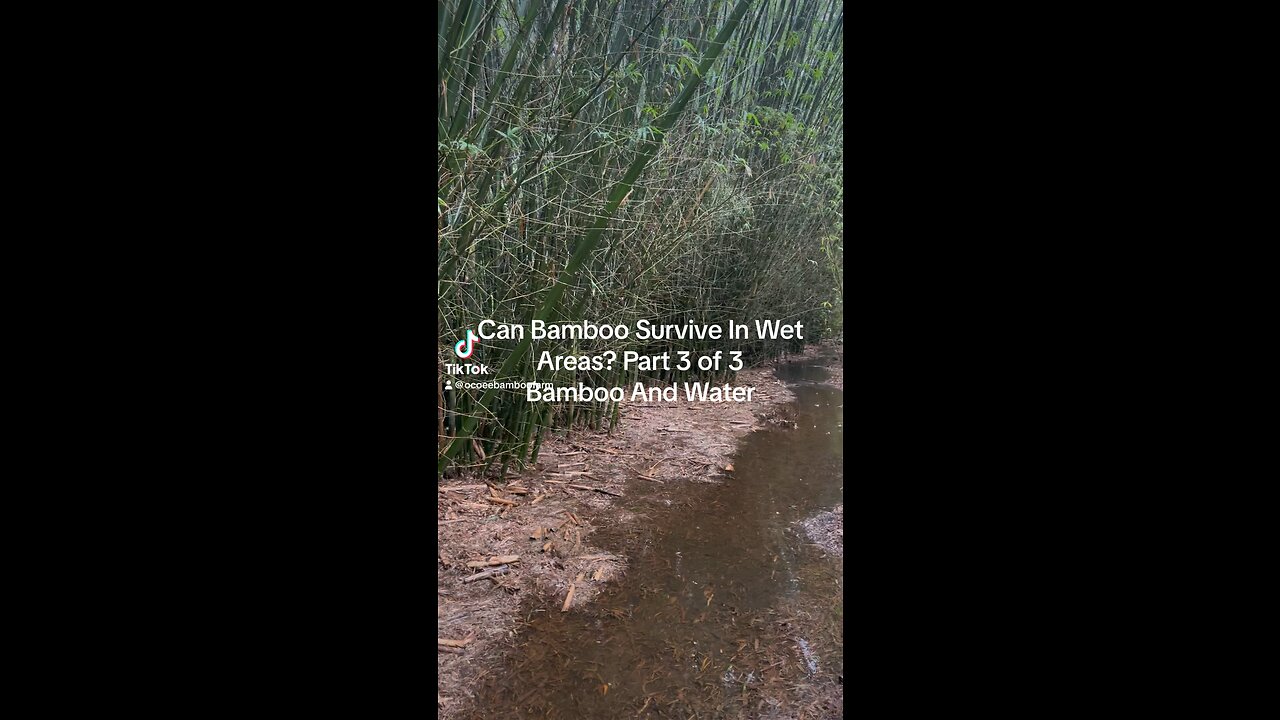Premium Only Content

Can Bamboo Survive In Wet Areas? Part 3 Of 3 Ocoee Bamboo Farm 407-777-4807
Planting bamboo in wet areas requires some specific considerations to ensure successful growth. Here's a step-by-step guide on how to plant bamboo in wet areas:
* Select the right bamboo species: Choose bamboo species that are suitable for wet areas or have good tolerance to waterlogged conditions. Consult with local nurseries or bamboo experts to determine the best species for your specific area.
* Choose a suitable planting location: Look for an area in your garden or landscape that receives partial to full sun. Avoid areas with poor drainage or standing water for long periods.
* Prepare the planting site: Clear the area of any weeds, grass, or debris. Dig a hole that is two to three times the size of the bamboo plant's root ball. Make sure the hole is deep enough to accommodate the entire root system without bending or crowding the roots.
* If the area holds standing water for more than a couple days create a mound and place the bamboo above the normal high water line.
* Amend the soil: Bamboo prefers slightly acidic soil with good drainage. If the soil in your planting area is heavy or poorly drained, consider amending it with organic matter such as compost or well-rotted manure to improve drainage. This will help prevent waterlogging and ensure healthy root growth.
* Plant the bamboo: Gently remove the bamboo plant from its container, being careful not to damage the roots. Place the plant in the center of the hole, making sure it sits at the same depth as it was in the container. Backfill the hole with the amended soil, firming it gently around the plant to eliminate air pockets.
* Water thoroughly: After planting, water the bamboo thoroughly to settle the soil and provide adequate moisture. Keep the soil consistently moist but not waterlogged during the establishment phase. Monitor the soil moisture regularly and adjust watering accordingly, taking into account rainfall and the specific needs of your bamboo species.
* Mulch the planting area: Apply a layer of organic mulch, such as wood chips or straw, around the base of the bamboo plant. Mulching helps conserve moisture, suppress weeds, and maintain a more stable soil temperature.
* Provide ongoing care: Regularly monitor the bamboo's growth and health. Water the plant during dry periods, and ensure it receives adequate nutrients. Fertilize the bamboo annually with a balanced organic fertilizer according to the manufacturer's instructions. Prune any dead or damaged canes as needed.
For more information about planting bamboo plants and wet locations contact Ocoee Bamboo Farm 407-777-4807
-
 1:14:07
1:14:07
Glenn Greenwald
6 hours agoComedian Dave Smith On Trump's Picks, Israel, Ukraine, and More | SYSTEM UPDATE #370
88.4K96 -
 1:09:07
1:09:07
Donald Trump Jr.
8 hours agoBreaking News on Latest Cabinet Picks, Plus Behind the Scenes at SpaceX & Darren Beattie Joins | TRIGGERED Ep.193
145K480 -
 1:42:43
1:42:43
Roseanne Barr
4 hours ago $27.84 earnedGod Won, F*ck You | The Roseanne Barr Podcast #75
49.3K72 -
 DVR
DVR
Slightly Offensive
5 hours ago $5.84 earnedDEEP STATE WINS?! Matt Gaetz OUSTED as AG & Russia ESCALATES War | Guest: The Lectern Guy
17.6K5 -
 LIVE
LIVE
Precision Rifle Network
5 hours agoS3E8 Guns & Grub - the craziness continues
293 watching -
 41:37
41:37
Kimberly Guilfoyle
6 hours agoPresident Trump Making all the Right Moves,Live with Border Union Chief Paul Perez & Lawyer Steve Baric | Ep. 176
94.1K23 -
 19:38
19:38
Neil McCoy-Ward
9 hours agoMASS LAYOFFS Have Started... (How To Protect Your Income)
13.8K5 -
 46:21
46:21
PMG
22 hours ago"Venezuelan Gang in 16 States, Animal Testing Crackdown, & Trump’s Nominee Battle"
6.97K3 -
 LIVE
LIVE
VOPUSARADIO
8 hours agoPOLITI-SHOCK! WW3!?, BREAKDOWN OF THE WORLD EVENTS & R.A.G.E. (What it means & What's next!)
102 watching -
 1:00:10
1:00:10
The StoneZONE with Roger Stone
6 hours agoWhy Democrats Hold Poor Children Hostage in Failing Schools | The StoneZONE w/ Roger Stone
34.9K5